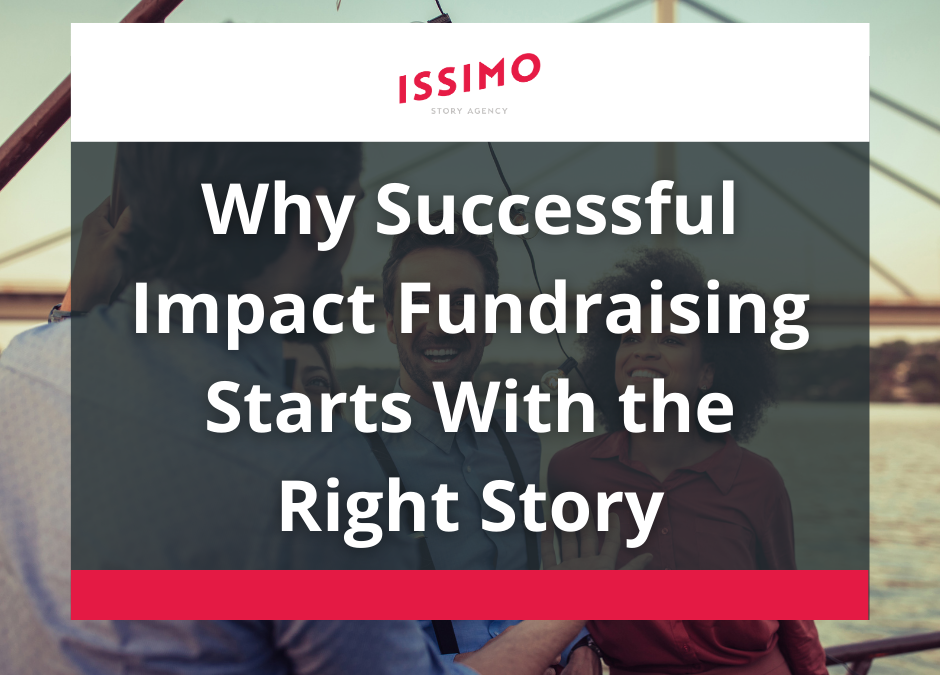Start Impact Fundraising With Your Story
We all like a good David and Goliath story — seeing the underdog win the day. In the impact fundraising space, you may often feel like David being outmatched against much larger forces. It’s important to remember that David didn’t beat Goliath by being bigger, stronger or having more resources. Instead, he played a different strategy by focusing on the right things that lead to victory.
Our attitudinal research study shows that having a clear, compelling message that connects with your target audience — whether it’s investors, donors, volunteers or partners — is more important than having ample resources. Telling the right story the right way is how you inspire action.
For a story to emotionally connect with your audience, you first need to know your audience. What do they want, and how can you help them get it? If you communicate that you’re uniquely positioned to help them get what they want, your chances for success are much higher.
The Right Story Makes Your Audience the Hero
As the famous writer John Steinbeck said, “If a story is not about the hearer, he will not listen.” The right stories make the audience the hero and your organization the supporting role — the guide, facilitator or helper that supports the audience. To make them the hero, center your story on their self-interest and how you help them get what they want (and in turn they do what you want).
The Right Story Shows More Than Tells
They say a picture is worth a thousand words. Emotional stories paint a picture for the audience that’s worth many more. To make your impact fundraising more successful, consider using concrete examples in your storytelling in addition to metaphors and case studies. Additionally, weave in outcomes and how your audience tangibly benefits. If they can see it, they can believe it.
The Right Story Speaks to the Head and Heart
Successful impact fundraising stories speak to both logic (head) and emotion (heart). Emotion unlocks behavior, while logic gives them a reason to make the decision. Your audience needs to view the story through both lenses for it to be meaningful and impactful.
According to our research, the three biggest things that affect an organization’s impact fundraising success are:
- Communicating a significant impact (72 percent)
- Strong visual storytelling (71 percent)
- Strong brand story (68 percent)
These elements surpass having a compelling/charismatic leader and affiliations with celebrities, which makes sense because they shouldn’t be the center of your storytelling. Instead, focus on the impact of what you do — and what role your audience plays in that story.
While 70 percent of our respondents have experience fundraising, only 30 percent say their fundraising efforts are very or extremely effective. That means most organizations have yet to connect with the right audience in the right way at the right time.
Visual storytelling is a powerhouse that ties all of these elements together. It’s also ideal for connecting the head and the heart, which creates a more engaging message.
The first step is making your impact fundraising story deeply relatable to your audience. It needs to inspire action for an end result, whether that’s a goal or an outcome they desire. Instead of framing your visual elements around why they should care, show them how the impact aligns with what they already care about.
To show and not just tell, incorporate examples, case studies and testimonials from beneficiaries into your impact storytelling. This can help ground the impact in tangible, concrete visuals instead of hypotheticals.
NPower does a wonderful job showing their donors what impact their dollars have with actual testimonials and success stories. In this fundraising film, they highlight four transformational stories from their alumni. From being homeless to getting hired to manage a global brand’s cyber security, they show how the program changes the trajectory of people’s lives. As a result of the film, they doubled their gala fundraising (and they used the same budget as in previous years). This is a prime example of why focusing on compelling storytelling is so important.
How to Tell the Right Story the Right Way
Visual storytelling is a powerful way to connect your audience with your impact objective. However, to make a lasting impression and compel action, you need to combine logic and emotion. As we’ve discussed in previous blogs, doses of aspirational messages can connect with audiences but the best stories are true to you and true to your audience.
To learn more about each segments’ behaviors and how you can tell the right story, check out our entire executive summary. And to explore the data yourself, check it out here.

